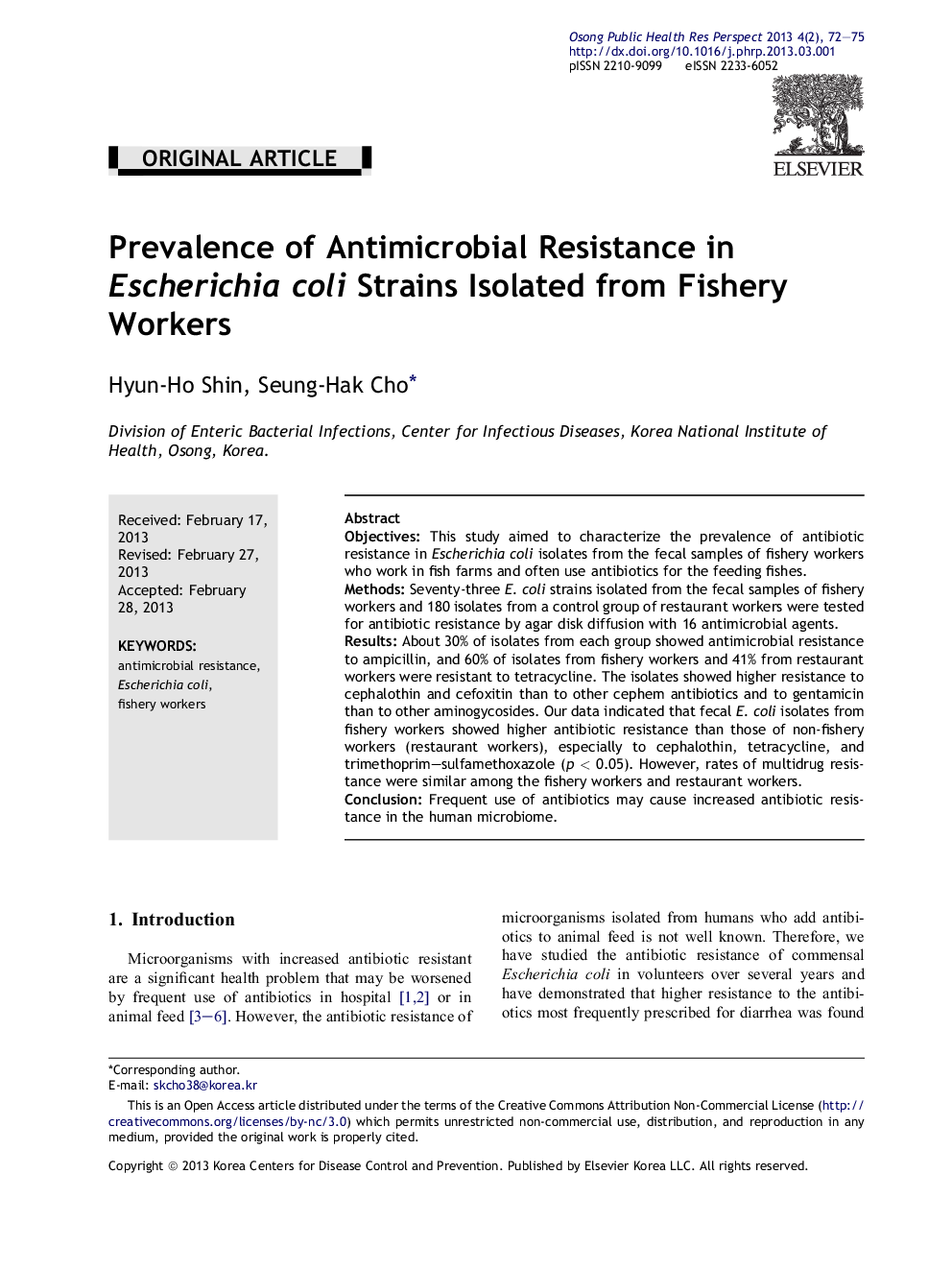| Article ID | Journal | Published Year | Pages | File Type |
|---|---|---|---|---|
| 4202205 | Osong Public Health and Research Perspectives | 2013 | 4 Pages |
ObjectivesThis study aimed to characterize the prevalence of antibiotic resistance in Escherichia coli isolates from the fecal samples of fishery workers who work in fish farms and often use antibiotics for the feeding fishes.MethodsSeventy-three E. coli strains isolated from the fecal samples of fishery workers and 180 isolates from a control group of restaurant workers were tested for antibiotic resistance by agar disk diffusion with 16 antimicrobial agents.ResultsAbout 30% of isolates from each group showed antimicrobial resistance to ampicillin, and 60% of isolates from fishery workers and 41% from restaurant workers were resistant to tetracycline. The isolates showed higher resistance to cephalothin and cefoxitin than to other cephem antibiotics and to gentamicin than to other aminogycosides. Our data indicated that fecal E. coli isolates from fishery workers showed higher antibiotic resistance than those of non-fishery workers (restaurant workers), especially to cephalothin, tetracycline, and trimethoprim–sulfamethoxazole (p < 0.05). However, rates of multidrug resistance were similar among the fishery workers and restaurant workers.ConclusionFrequent use of antibiotics may cause increased antibiotic resistance in the human microbiome.
